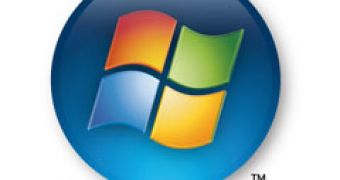Creating a more intelligent Windows Vista operating system, for Microsoft is equivalent to delivering a more intelligent experience for the end user. In this context, the Redmond Company has introduced a high level of automation. "Our vision was to use intelligence about the user and the environment to deliver a better experience for the user. And while there is so much more to be done in the future, Windows Vista does some incredibly innovative things that other software doesn't," revealed Jim Allchin, Microsoft Co-President, Platform and Services Division.
When talking about a more intelligent operating system, Allchin referred to a set of Vista features that differentiate the operating system from any other piece of software to the benefit of the users. SuperFetch, the Next Generation TCP/IP stack, Network Location Awareness (NLA) functionality, the handwriting- and speech-recognition capabilities and the Windows Recovery Environment are the features improved for a more intelligent Vista.
"SuperFetch watches how you work and then uses the RAM on your system in a new way that optimizes the system's performance to the way you work. For example, in contrast to traditional memory management systems that today use an approach to prioritizing how RAM is allocated to the various programs and services running on the system, SuperFetch can differentiate memory being used for interactive (high-priority) tasks from memory used for background (low-priority) tasks," Allchin explained.
This means that Windows Vista will only permit background tasks to run when it detects no user interaction, and then re-loads the content for interactive applications into RAM. Additionally, over a long period of time, SuperFetch will identify most used applications and will pre-populate the memory with them.
"We also saw an opportunity to improve the user experience with the network. At the lowest level, the Next Generation TCP/IP stack in Windows Vista senses and learns about the network and uses this information to automatically tune settings. Windows Vista's TCP/IP stack has new auto-tuning algorithms that automatically and dynamically adapt the TCP receive windows to the properties of the network path between the endpoints. This allows the stack to fully utilize the bandwidth between two endpoints (especially in high-delay conditions) and dynamically adapt to changing bandwidth and delay characteristics", Allchin added.
In Windows Vista, Microsoft has also enhanced and automatized the dead gateway detection algorithms and the round-trip time estimators. Additionally, via the Network Location Awareness (NLA) capabilities, Vista will be able to detect, recognize and dynamically modify systems settings according to the network connection.
Jim Allchin ended the description of the intelligent features in Vista with the operating system's handwriting- and speech-recognition capabilities and with the Windows Recovery Environment. "While the focus of my previous comments was on the ability to get a Windows Vista PC up and running, it's important to note the way that the Recovery Environment works. It essentially uses a heuristic-based diagnosis approach in the same way that one of our support engineers might work on the system if s/he had a debugger and direct access to it," Allchin said.

 14 DAY TRIAL //
14 DAY TRIAL //